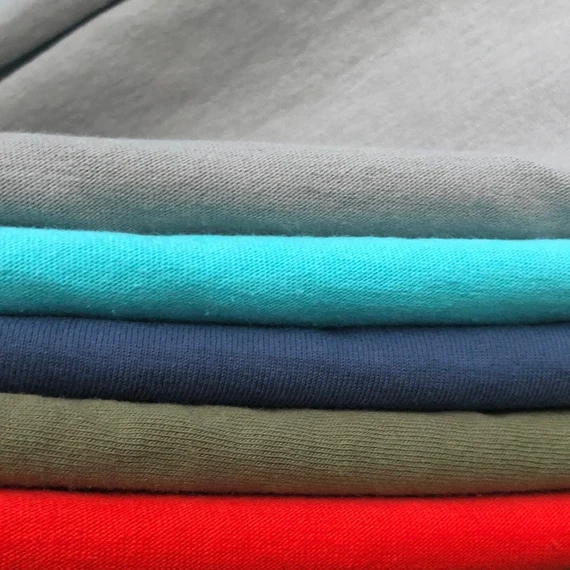The cost of production is a vital element for any maker of textiles. Without it, the business enterprise wouldn’t be capable of providing customers with competitive pricing. Knitting and weaving are the most widespread methods for growing a piece of cloth. They frequently contain tricky technological aspects that demand in-depth studies. Click here
The rate connected with each step the yarn takes to turn out to be a chunk of fabric should be considered.
This article will cowl the components that determine a garment’s usual cost in addition to a way to convert rate per metre to rate per kilogram.
Why is it Necessary to Know the Production Cost of a Garment?
The value of raw materials, enterprise going for walks charges, and predicted or found out earnings are brought collectively to determine the cost of the garment.
Recognizing the buyer’s price expectations is also crucial. Depending on the devices used, there are only methods to calculate the cost. It may be simpler to get good deals with stores if one knows the actual price of their items. There is an excellent probability that each party will conform to a reasonable charge as soon as merchants keep in mind that the manufacturer is aware of the value of manufacturing.
It might be challenging to estimate the price of a garment if one does not keep a radical invoice of substances.
Factors Affecting Overall Cost of a Garment
Given under is a list of some not unusual factors that affect the overall fabric fee for any fabric producer:
For More Info Visit : women’s fashion blog
The range of machines used: Using excessive-tech machines that produce high volumes at a faster charge enables producers to achieve more immediate effects. However, using those relatively advanced machines significantly will increase one’s investment. This, in turn, can considerably affect the general value of the garment.
However, having ultra-modern production machines at one’s disposal does not constantly assure a high-quality result. It relies upon what one is producing. Some factories nevertheless rent old equipment and gain superb effects. This reduces their investment, sooner or later cutting down on the general value of the garment.
Percentage of waste: There is sure to be a little wastage of material in trimmings; however, lesser wastage will lead to a lower final fee. Proper upkeep of machinery enables to lessen the percentage of waste.
Quality of cloth used: Fabric exceptional is essential when discussing cloth cost. It accounts for nearly 60-70% of total manufacturing-related fees. Some general parameters that affect material cost include:
- Unit of the size used
- Incoterm used
- Minimum order quantity
- Dyeing value
- Knitting price
Wages of operators: The salaries paid to the operators are also factored into the yarn price. As a clothing manufacturer, having a fixed number of skilled people at one’s disposal is vital. If a corporation desires professional operators, they need to spend more. This phenomenon, in addition, contributes to a growth in production expenses. If one wishes to grow their manufacturing enterprise exponentially, praising employees for their contributions is essential.
One has to follow a few steps first of all.
A wide variety of helpers and operators worried inside the procedure: The better the number of helpers and operators worried, the better the wages that need to be paid. This phenomenon at once impacts the overall fee of manufacturing. However, the variety of operators required relies upon one’s plant’s efficient potential and era degree.
Other associated prices: Transport, packaging, and other miscellaneous expenses incurred at the cloth (no longer part of its intrinsic cost) also upload to its general or average price. The price of poly baggage and cartons for delivery depends on thickness, measurement, and uncooked cloth used. The packaging price is similarly essential as it gives a tremendous difference while considering the entire order amount.
A Detailed Guide to Fabric Price Conversion from Per Meter to Per Kilogram
“The value of the material is 95 rupees in line with the square metre.
What is the fee for a metre? And how can I alternate the cost consistent with the kilogram of fabric from the price in keeping with a metre? Could you please explain?” – Mr. X, an apparel manufacturer.
Now that we’ve mentioned the different factors that affect the overall price of material, it’s crucial to dive deeper.
The above assertion is a not unusual question that manufacturers regularly ask us. It is a commonplace that providers offer the fabric price in keeping with m in length, which is then converted into the rate in step with kilogram.
What facts do we have?
To start, one desires to convert 1 metre of material into weight (kg).
Before starting the procedure of converting the rate in step with the metre, here’s the information we have already got:
Width of Fabric: 60 inches
Weight of Fabric Per Square unit: GSM 220
Length of cloth: 1 metre
What is the formulation to convert cloth duration in kilograms?
One can utilise the formulas given underneath to find the total weight of the cloth:
Weight of material roll = (Fabric place X weight of material according to rectangular unit)
.
OR
(Fabric Weight (in grams): Length of cloth in metres X width of the material in metres X Fabric GSM)
How to Convert Fabric Width from Inches to Metres?
- This section will analyse how one can convert material width into metres.
- For example, when changing the fabric of width 60 inches into metres, the transformed fee (in metres) might be 1.524m.
- Similarly, a fabric of width 220 inches in metres would be 220*2. Fifty-four/a hundred, which is 5.588 metres.
- The above price is calculated by multiplying the material width with the aid of 2.54 after dividing it by a hundred.
- We’ll then utilise the fabric weight formulation (in grams) to acquire the result.
- Weight of1m fabric (in grams) = 1.524 metre (width) X1 metre (length) X 220 (GSM)
- Once we’ve located the material weight (in grams), the following step is to convert the value into kg.
- So,
- 335.28/a thousand = zero.33528 kg (because grams consistent with kg is a thousand)
- Now, because we’re paying ₹ ninety-five for the above amount of cloth, here’s how we will calculate the price in step with kg for the equal.
- (Price ÷ quantity of material (in kilogram))
- = (₹95/0.33528 kg)
- = ₹283.35/kg
Therefore, if the price consistent with m of material is ₹95, then the price in keeping with kg of the identical apparel cloth would be ₹283.35.
How to Get the Best Cloth Price from Suppliers?
To get pleasant cloth pricing, one must pay close attention to fine and production prices. Keeping correct relations with suppliers is some other essential element news.
Additionally, one must constantly ship samples to feasible suppliers and ask about their offers. This lets in for identifying better providers and enables one to preserve a watch on marketplace costs.
Another critical method for bargaining with suppliers is to preserve a strong “Bill of Materials.”
To get a good quote for their needs, humans can choose a website platform connecting them with providers.
Conclusion
is a tech-based comprehensive platform that allows producers to streamline fabric production. They can use the platform to outsource fabrics on the quality-price even as connecting with 100s of providers globally. https://fashionsaround.com/









